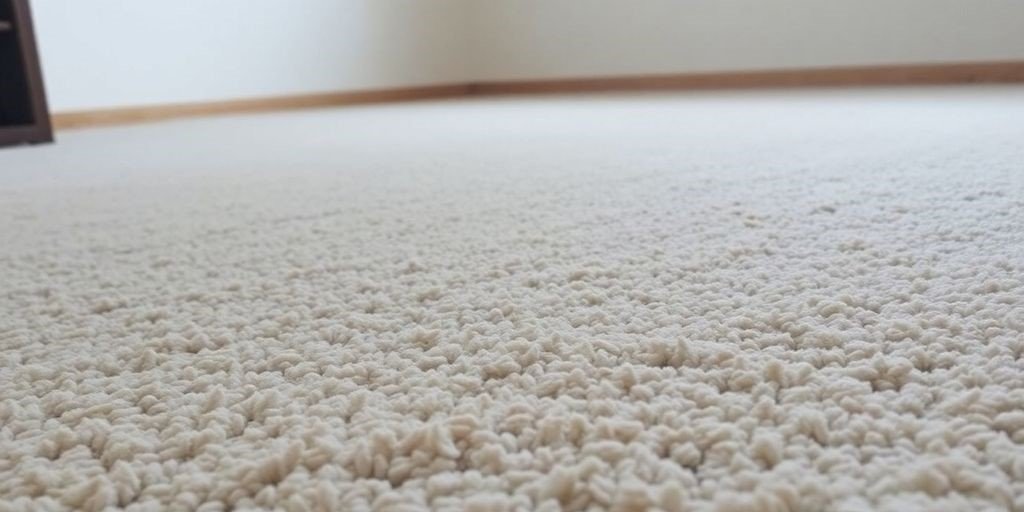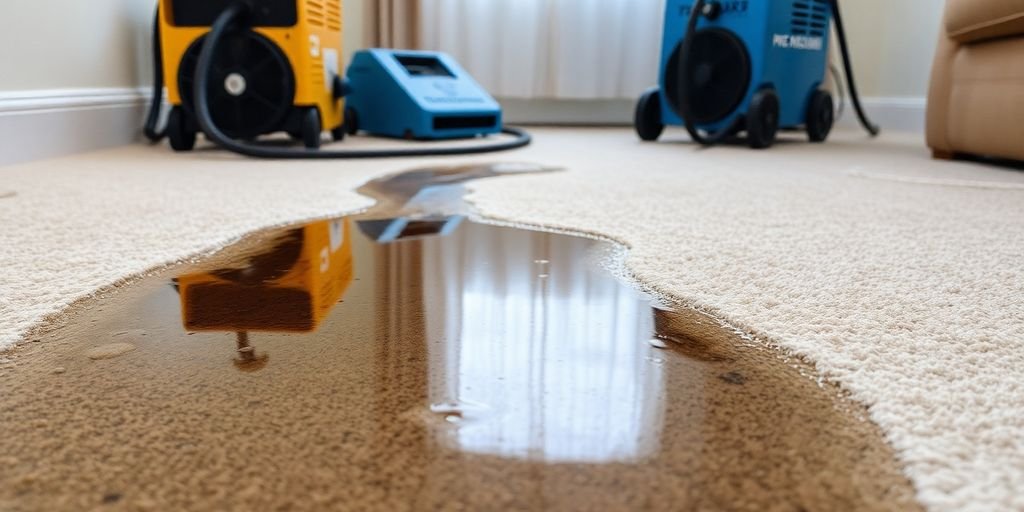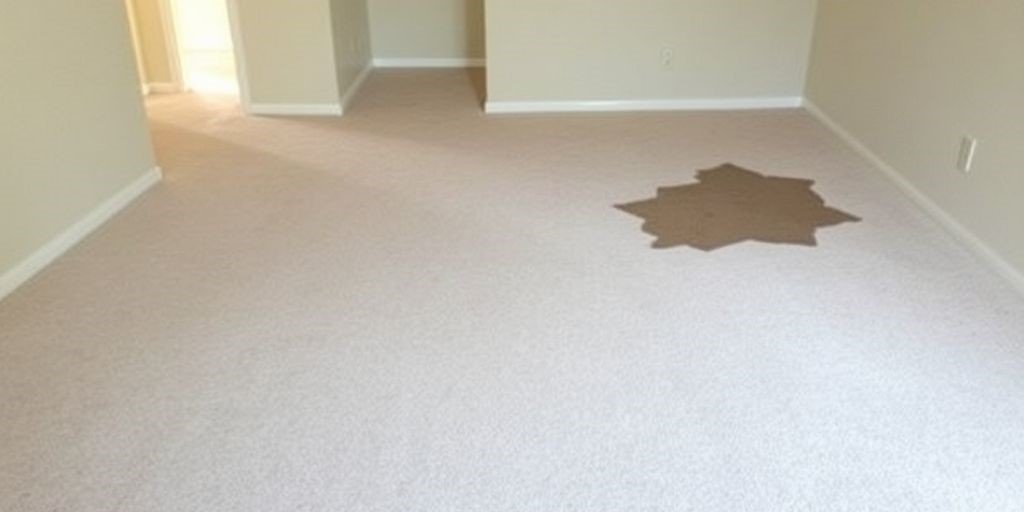So, your carpet took a bath, huh? Whether it was a leaky pipe, a storm surge, or something else entirely, dealing with water damage to your carpet is a real pain. It’s not just about the soggy mess; it’s about what that water can do long-term. We’re talking mold, yucky smells, and carpets that just never look right again.
Trying to fix it yourself might seem like a good idea, but honestly, it’s usually not enough. That’s where the pros come in, especially if you’re in the Denver area and need some serious Carpet Restoration in Denver.
Key Takeaways
- Water damage can quickly lead to mold and mildew, which are bad for your health and your home.
- Professionals have the right equipment to really dry out your carpets and padding, something a regular vacuum just can’t do.
- The type of water matters – clean water is easier to deal with than contaminated ‘black water’.
- Acting fast is super important; the longer water sits, the worse the damage gets.
- Even if the carpet looks okay, the padding underneath might need replacing, and professionals can tell you for sure.
Understanding the Impact of Water Damage on Carpets
When water finds its way onto your carpets, it’s more than just an inconvenience; it’s the start of a process that can quickly damage your home. The longer water sits, the more it soaks into the carpet fibers and the padding underneath. This isn’t just about a wet spot. Think about it: that moisture is a perfect breeding ground for all sorts of nasty things.
We’re talking mold and mildew, which can start growing in as little as 24 to 48 hours. These aren’t just unsightly; they can release spores into the air, causing respiratory issues and that unpleasant musty smell that just won’t go away.
So, when you’re dealing with water damage in Denver, understanding these impacts is the first step. It highlights why quick action and professional help are so important for effective Denver water damage carpet repair and cleaning.
Here’s a quick look at what happens:
- Fiber Breakdown: Water weakens the bonds holding carpet fibers together.
- Padding Saturation: The underlay absorbs significant moisture, taking longer to dry.
- Subfloor Damage: Moisture can seep through to the subfloor, causing rot or structural issues.
- Mold Growth: Warm, damp conditions are ideal for mold and mildew development.
The longer water remains trapped in your carpet and padding, the more extensive the damage becomes, increasing the likelihood of permanent issues and health hazards.
Why Professional Carpet Restoration is Crucial
Dealing with water damage in your home can be overwhelming, and when it comes to your carpets, it’s easy to think a quick DIY fix might be enough.
However, water damage goes deeper than just a wet surface, and trying to handle it yourself can often lead to bigger problems down the road. Professional restoration is key to properly addressing the issue and protecting your home.
A sudden coffee spill during your morning rush can turn your living room into chaos. At A1 Red Carpet, we understand how quickly accidents can ruin the beauty of your carpets. Our carpet restoration in Denver service brings back color, texture, and freshness with expert techniques. We use safe, effective cleaning methods that protect your flooring investment while restoring its comfort.
Preventing Mold and Mildew Growth
This is probably the biggest reason to call in the pros. Water that sits in your carpet and padding creates a perfect breeding ground for mold and mildew. These fungi can start growing within 24-48 hours, and once they take hold, they can spread rapidly.
Not only do they damage your carpet and the subfloor, but they also release spores into the air, which can cause serious respiratory problems and allergic reactions for anyone living in the house.
Restoring Carpet Integrity and Appearance
Water can do more than just make your carpet look dirty. Depending on the type of water (clean, gray, or blackwater), it can carry contaminants that stain and degrade carpet fibers. High-quality carpet is an investment, and professional cleaning and restoration services aim to bring it back to its original condition.
They use advanced techniques and solutions to remove stains, odors, and water marks, helping to preserve the carpet’s texture and color. Without this, your carpet might not only look bad but also become permanently damaged and require costly replacement.
Protecting Your Health and Home Environment
Beyond mold, water-damaged carpets can harbor bacteria and other harmful microorganisms, especially if the water source was contaminated. These can pose significant health risks. Professionals are trained to identify different water categories and use appropriate sanitization methods to eliminate these hazards.
They also focus on thorough drying, which is vital for preventing secondary damage like warped floorboards or damaged drywall. Getting professional restoration services ensures your home is not only clean but also safe and healthy for your family.
Here’s a quick look at why professional help makes a difference:
- Thorough Water Extraction: Professionals use powerful equipment that removes far more water than a home vacuum or towels.
- Advanced Drying Techniques: Specialized fans, dehumidifiers, and air movers speed up the drying process, preventing moisture from lingering.
- Sanitization and Odor Control: They use industry-grade products to kill bacteria and neutralize odors, which DIY methods often can’t achieve.
- Damage Assessment: Experts can determine if the carpet padding needs replacement and identify any structural damage that might be hidden.
Trying to save money by skipping professional help for significant water damage can end up costing you much more in the long run. The potential for health issues and the need for complete replacement later on are real risks.
When you’re faced with water damage, remember that acting quickly and calling the right professionals can make all the difference in saving your carpets and maintaining a healthy living space.
The Professional Carpet Restoration Process
When your carpets take a bath they didn’t ask for, it’s not just about getting them dry. A proper restoration job involves several key steps to make sure your carpets are safe, clean, and as good as new.
It’s a process that requires specific tools and knowledge, especially when dealing with water damage in Denver.
Initial Assessment and Water Extraction
The first thing a pro does is figure out just how bad the damage is and where the water came from. This helps them decide the best way to tackle the problem. Then comes the heavy lifting: getting all that standing water out.
This is where Denver carpet water extraction services really shine, using powerful equipment that’s way more effective than your home shop vac. They’ll remove as much water as possible, which is super important for preventing further damage and mold growth.
Drying and Dehumidification Techniques
After the bulk of the water is gone, the real drying begins. Professionals use specialized air movers and dehumidifiers to pull moisture out of the carpet fibers, the padding, and even the subfloor.
This isn’t just about making it feel dry; it’s about getting it actually dry to prevent mold and mildew. They monitor humidity levels closely to make sure everything dries properly and quickly.
Odor Removal and Sanitization
Water damage, especially from contaminated sources, can leave behind some pretty nasty smells and bacteria. Professionals use special cleaning solutions to sanitize the carpet and padding, killing off mold spores and bacteria.
They also have treatments to neutralize odors, so your home smells fresh again, not like a damp basement.
Carpet Cleaning and Stain Treatment
Once everything is dry and sanitized, it’s time for a deep clean. This usually involves hot water extraction, often called steam cleaning, to remove any remaining dirt or stains. Professionals have access to cleaning agents that can tackle specific types of stains left behind by the water.
They’ll work to restore the carpet’s appearance and texture, aiming to bring it back to its pre-flood condition. For those dealing with flood damage, looking into Denver flood carpet cleaning can help ensure all these steps are handled correctly.
Choosing the Right Carpet Restoration Service in Denver

When disaster strikes your home in Denver, dealing with waterlogged carpet can feel overwhelming. You need a reliable service that understands the urgency and knows how to handle flood-damaged carpet restoration CO. Finding the right carpet cleaning services Denver flood specialists means looking for a few key things.
Experience and certifications are paramount. Look for companies that have technicians certified by the IICRC (Institute of Inspection Cleaning and Restoration Certification). This means they’ve been trained in the proper methods for water damage restoration and carpet cleaning.
It’s also smart to check if they offer emergency carpet cleaning Denver services, because when your carpet is soaked, you can’t wait for business hours.
Here’s what to consider when picking a restoration company:
- Response Time: For water damage, quick action is everything. Ask about their emergency carpet drying Denver availability and how fast they can get to your home.
- Equipment: Do they use professional-grade equipment for water extraction and drying? Truck-mounted systems and industrial dehumidifiers make a big difference in restoring wet carpets in Denver.
- Services Offered: Ensure they cover all the bases, from professional wet carpet drying Denver to odor removal and sanitization. You want a company that can handle flood carpet repair in Denver from start to finish.
- Reputation: Check reviews and ask for references. A company with a good track record for home carpet flood recovery in Denver is your best bet.
When to Call for Professional Help
Figuring out if you can handle water-damaged carpets yourself or if it’s time to call in the pros can be tricky. Generally, if the water has soaked through to the carpet padding or has been sitting for more than 24 hours, it’s best to get professional help. Trying to dry things out yourself might not be enough, and you could end up with bigger problems down the line, like mold.
Here are some signs that it’s definitely time to call a professional restoration service:
- The water source is unknown or unsafe: If you’re dealing with anything other than clean tap water, like sewage or murky floodwater, don’t try to clean it yourself. This type of water, often called ‘black water,’ can carry serious health risks.
- The water has spread significantly: If the water has affected a large area of your carpet, or if it’s seeped into walls or furniture, it’s beyond a simple DIY fix. Professionals can manage extensive water damage and prevent further spread.
- You notice signs of mold or mildew: If you see or smell mold, even a little bit, it’s a clear indicator that professional intervention is needed. Mold can spread quickly and pose health hazards.
Don’t underestimate the damage water can do. What looks like a minor wet spot today could become a major mold problem in a few days if not dried and treated properly. It’s always better to be safe than sorry when it comes to water damage in your home.
Wrapping Up: Getting Your Carpets Back in Shape
So, dealing with flooded carpets is a real headache, no doubt about it. Whether it’s a leaky pipe or a bigger flood, acting fast is key. Remember, not all hope is lost for your carpets, but it really depends on the type of water and how long it sat there. Sometimes, you can save the carpet itself, but the padding underneath might need replacing.
At A1 Red Carpet, we bring carpets back to life with our expert carpet restoration in Denver. Our team uses advanced cleaning methods and gentle yet effective products to restore texture, color, and freshness. Whether it’s a treasured rug or a whole-room carpet, we make it look and feel like new.
Contact us right now for reliable carpet cleaning services in Denver.
Frequently Asked Questions
What’s the first thing I should do if my carpet gets wet?
When water damage happens, it’s super important to act fast, ideally within 48 hours. This helps stop mold from growing. Avoid walking on wet carpets because they get weak. Use a wet vacuum or towels to get out as much water as you can. Then, turn on fans and dehumidifiers to help dry things out and prevent mold.
Should I try to dry my carpet myself or call a professional?
It’s best to call professionals. They have special equipment that’s way better than what you can get at a store for drying and cleaning. Plus, they can check for hidden moisture and make sure everything is cleaned and safe, which is important for your health.
What are the different types of water damage, and how do they affect my carpet?
Water is put into three categories. Category 1 is clean water, like from a burst pipe. Category 2 is ‘grey water’ from things like washing machines, which has some dirt. Category 3 is ‘black water’ from sewers or floodwaters, which is very dirty and dangerous. Cleaning carpets damaged by black water is usually not possible.
Can my carpet be saved after a flood?
Yes, sometimes. If the carpet was only wet for a short time (less than 24-48 hours) and it was clean water (Category 1), professionals might be able to save it. They can clean and dry it properly. But if the water was dirty or sat for too long, the carpet might need to be replaced.
What about the carpet padding? Does it need special attention?
Even if the carpet looks dry, the padding underneath might still be wet. Padding is thicker and takes longer to dry. If the padding doesn’t dry completely, it can lead to mold and bad smells. Professionals will check the padding and may need to replace it.
Is it important to sanitize the carpet after water damage?
Yes, definitely. Floodwater can carry germs and dirt, which can make you sick. Professionals use special cleaners to kill germs and get rid of bad smells. This is really important for keeping your home healthy after a flood.


